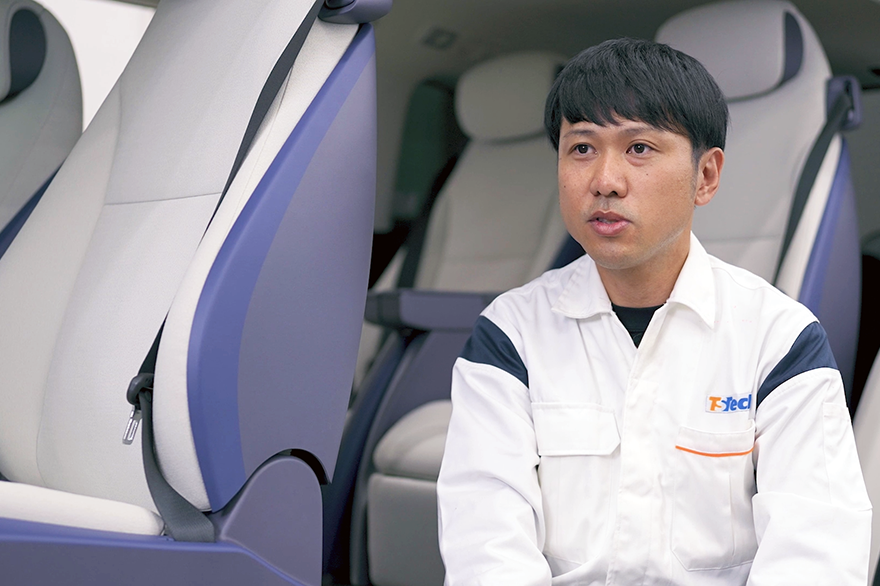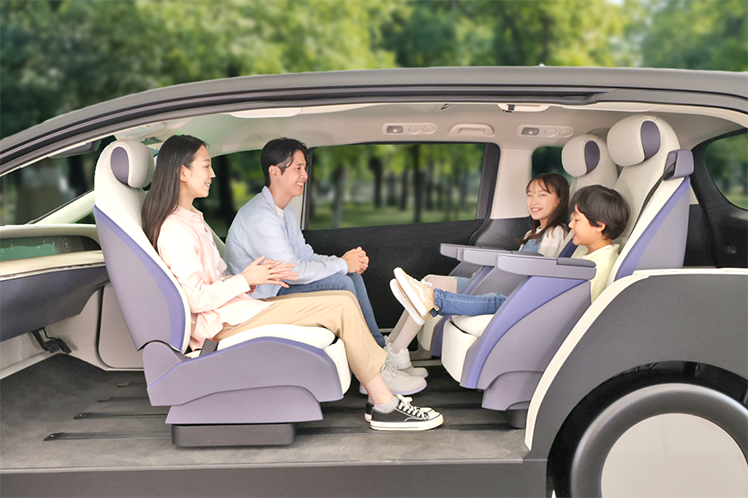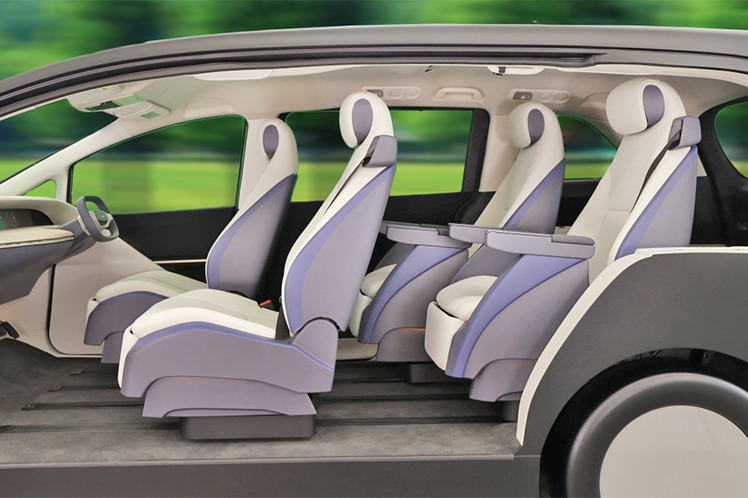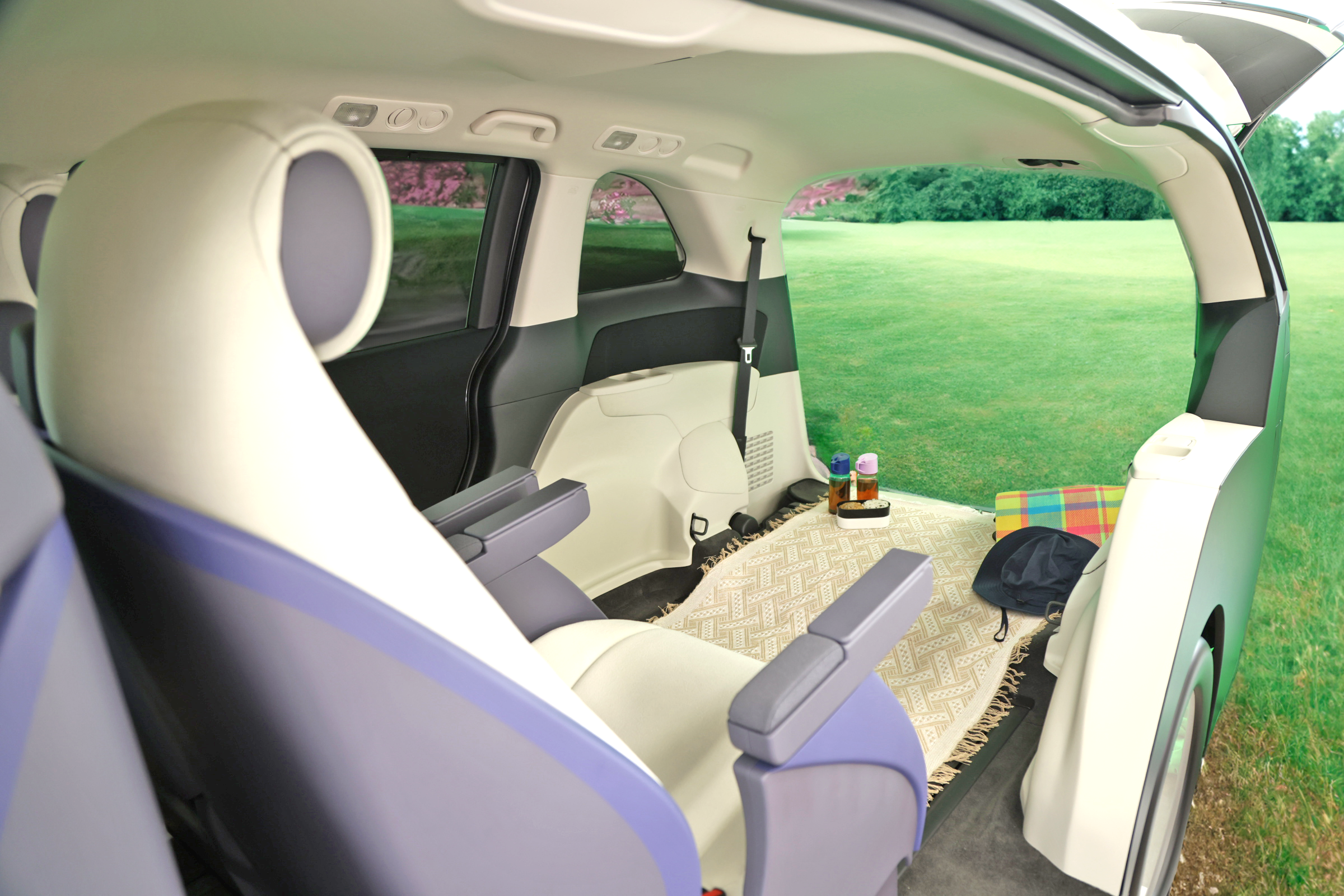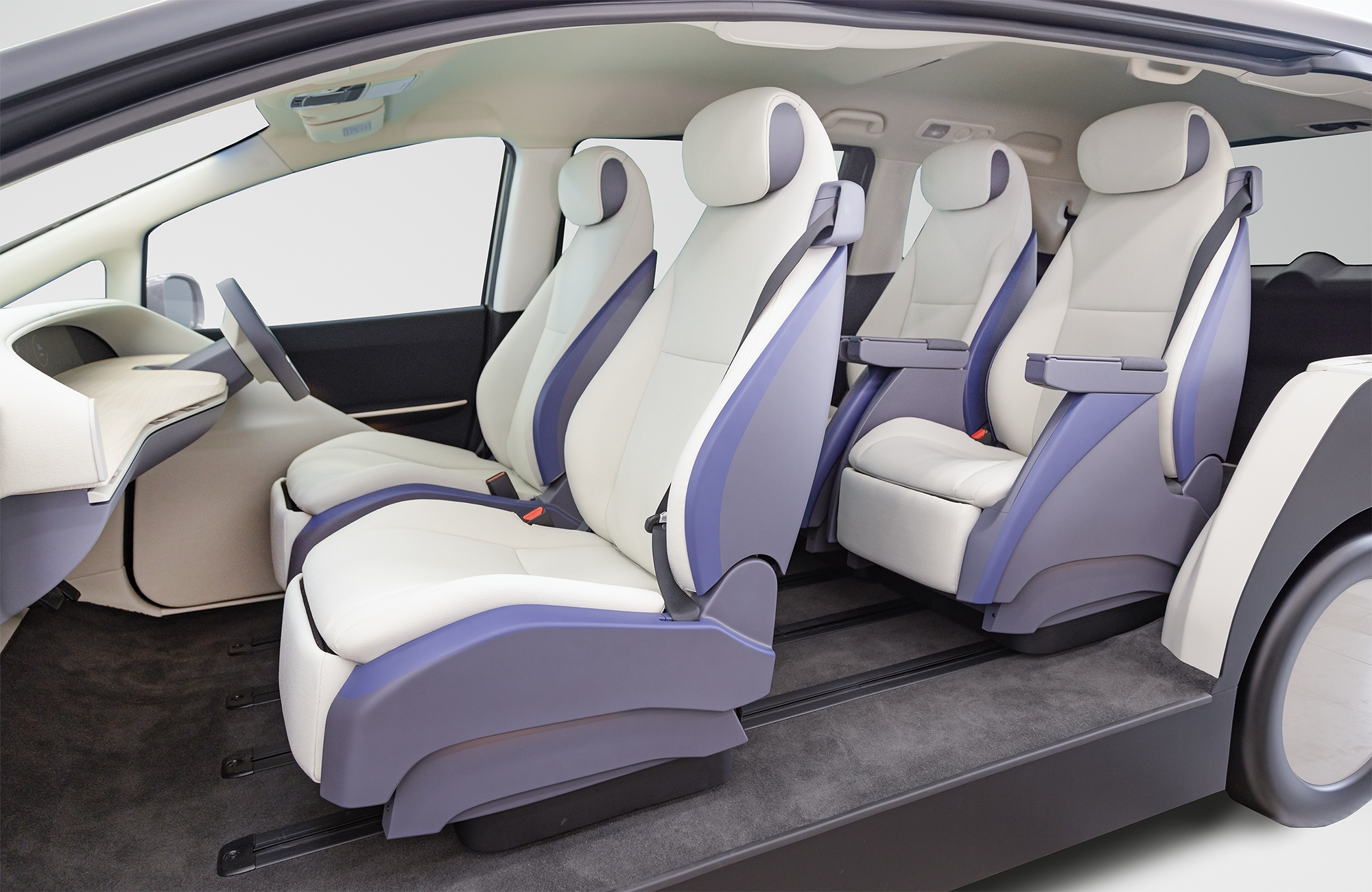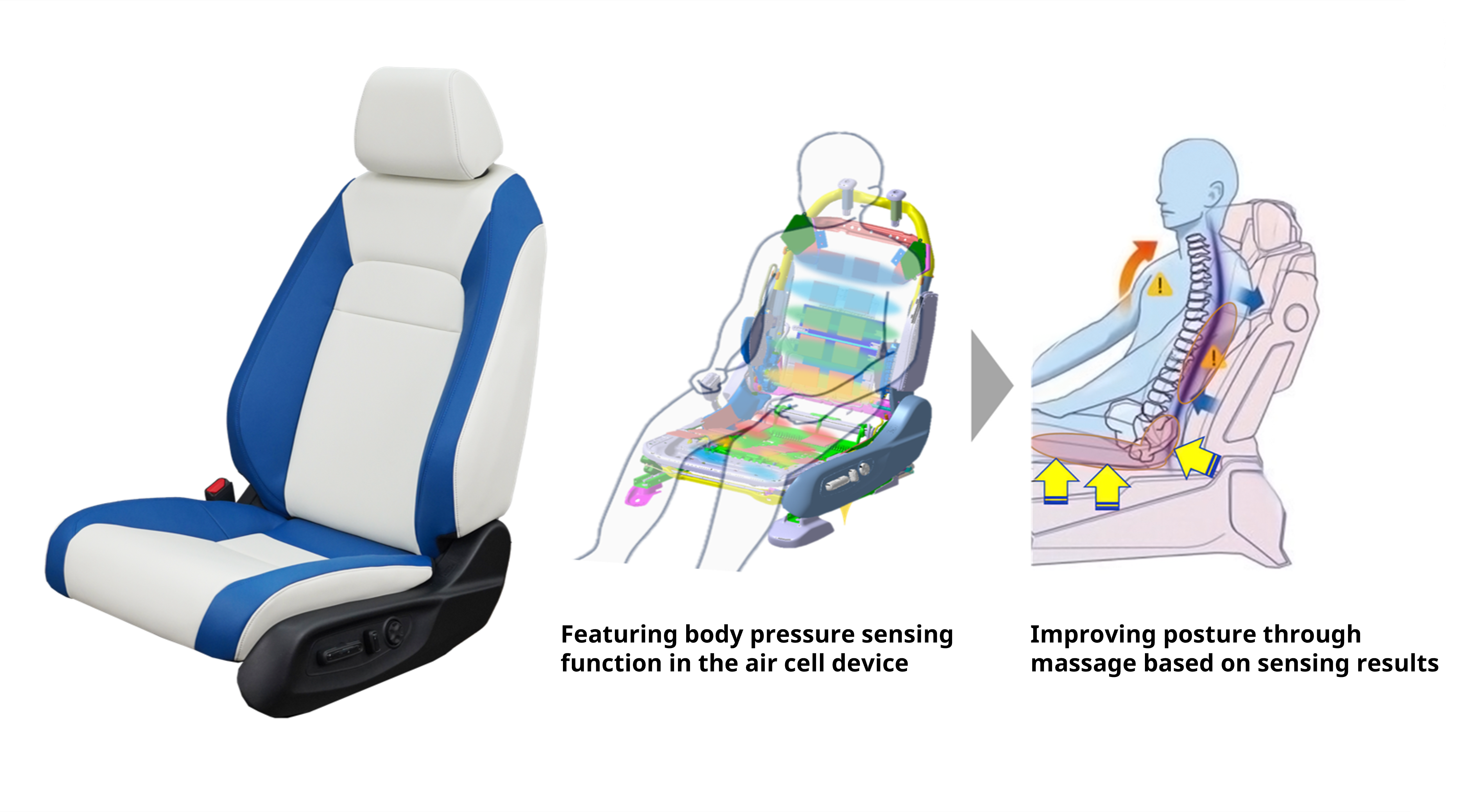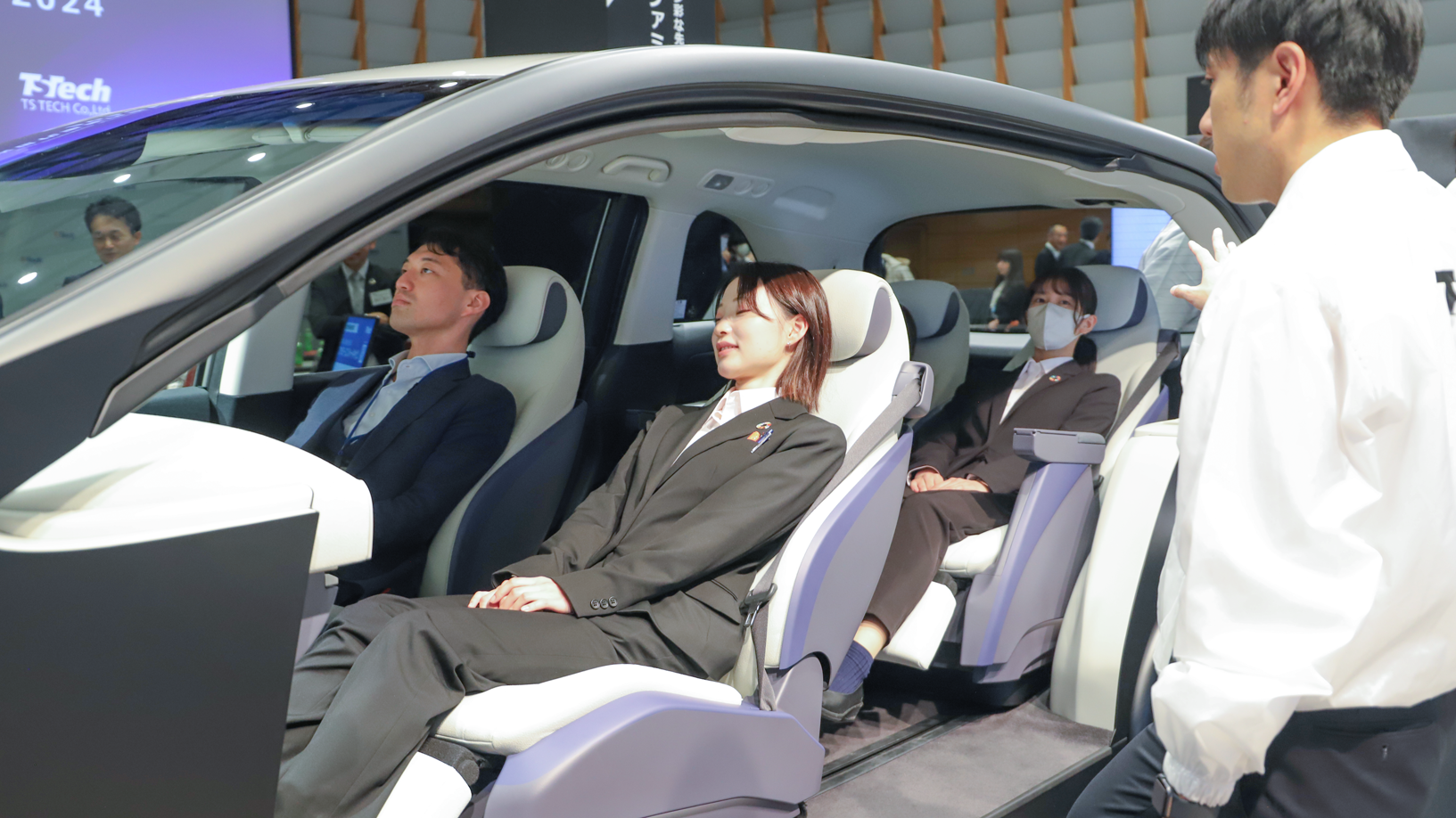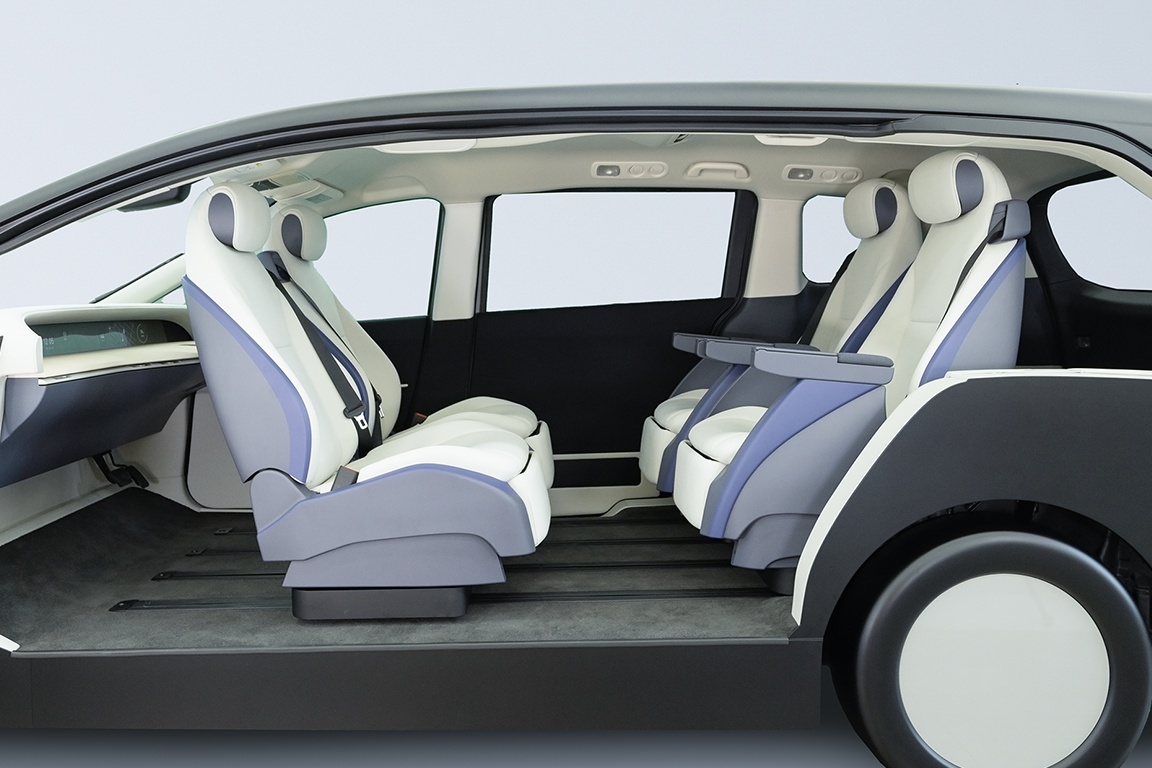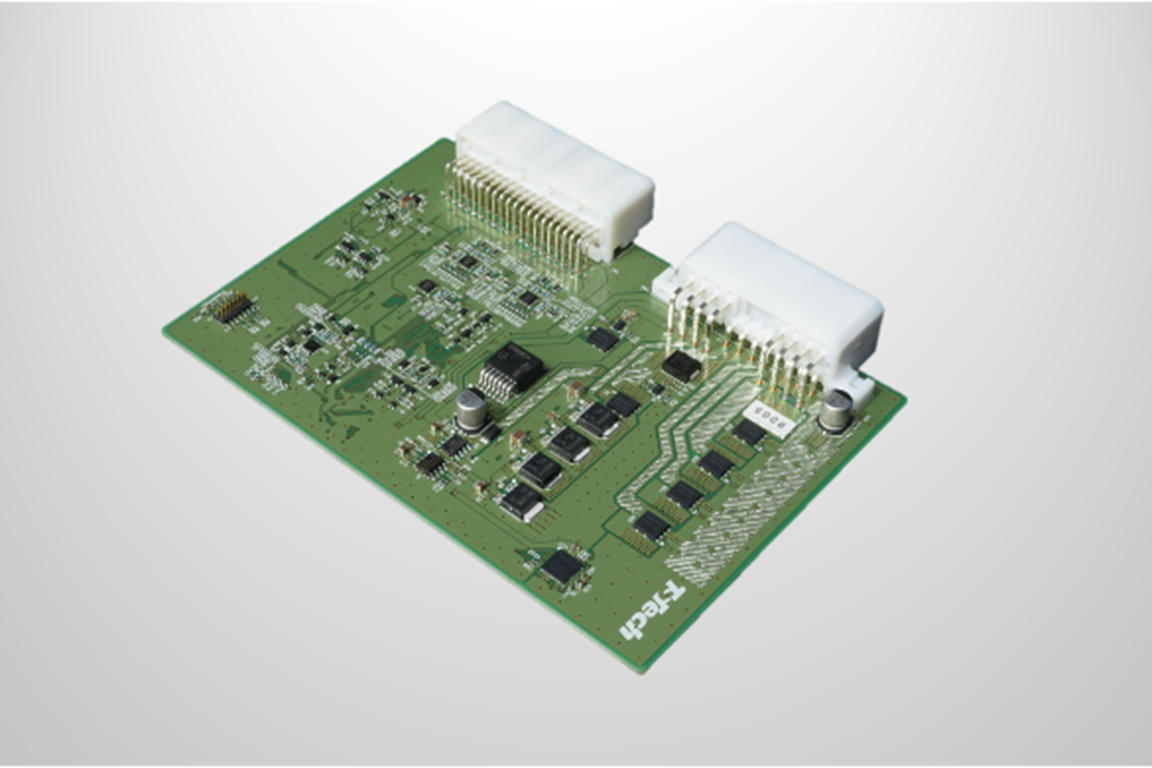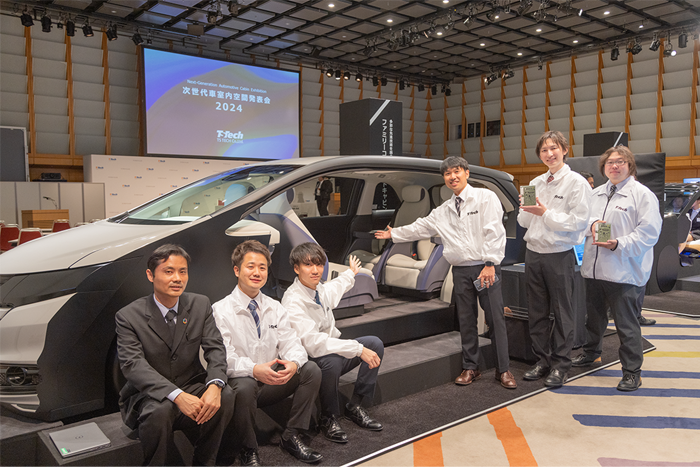Dec. 18, 2024
Employee
Integrating a range of advanced technologies
Family Comfort Cabin
What is the appeal of next-generation automotive cabin that changes family travel time?

TS TECH proposed new automotive cabins for next-generation vehicles and introduced the Family Comfort Cabin,
a minivan space that enhances comfort during family travel time to satisfy all.
We asked the leader of the team that developed this new cabin,
which makes family outings and long drives more comfortable and enjoyable, about the concept behind the product.
TomiokaOur goal was to develop a minivan space that enhances comfort during family travel time to satisfy all. For this reason, the structure of the minivan-sized cabin makes it possible to slide the long-slide seat rails both sideways and fore and aft for a versatile seat arrangement within the restrictions of the limited cabin space to make the best use of the space during family travel or other times. For example, the face-to-face mode, which rotates the front seats automatically, was very challenging technically for a minivan of this size with a center pillar construction*. We managed to pull it off thanks to our technical expertise and the ideas contributed by team members.
The cabin also features various advanced technologies targeting the next generation to propose new ways to spend time in the cabin in line with passenger preferences, in addition to seat arrangement.
* Base vehicle size: 4,840 mm (l), 1,820 mm (w), 1,695 mm (h)
Seat arrangement examples
TomiokaBased on experiences with my own children, as well as the experiences of other team members involved in the development, we set out with the goal of applying new technologies to resolve small annoyances or requests families have, such as the boredom when stuck in traffic and fatigue on long trips. We tried to create a cabin in which families could enjoy comfortable meals at crowded services areas as well as a relaxing space in transit. Of course, rather than thinking just about children, we tried to create a space that is comfortable for adults as well.
TomiokaThe zigzag mode, for example, makes it possible to adjust the positioning of the passenger and rear seats from the driver’s seat. This seat layout makes it easier to hand something such as a tissue to a child in the back seat while driving. The seat arrangement also makes it easier for parents to check on children in the rear and the children themselves are reassured by the sight of their parents, facilitating communication between the front and rear seats.
For times when children get bored, the speakers and vibration device inside the seats can be linked to audio and video for an immersive experience. Or the seats can be connected to a smartphone for gaming control functionality to actively enjoy playing games. The wealth of entertainment features makes trips enjoyable from start to finish.
Of course, the cabin is also full of features that meet the needs of adults as well. A healthcare seat (link to healthcare seat) we’ve been working on the development of can be used in various ways to reflect passenger preferences. In addition to a refreshment feature to ease the fatigue of a long trip, a sensing function and air cell device inside the seat support care for the lower back by providing advice for improving posture. The refreshment feature can also be used to warm up for enjoyable exercise on arriving at a destination.
With a focus on women’s health concerns, the femtech mode uses air cells to improve pelvic posture and heaters to gently warm the hips to ease menstrual cramps. Fusing seat arrangement adjustability with these advanced proprietary technologies allows the automotive cabin to deliver new ways of spending time in the cabin while in transit or during wait times.
TomiokaYes. It proved quite challenging to realize the face-to-face mode, one of the most attractive features of the cabin we exhibited at the exhibition. Other companies had introduced the face-to-face mode in certain products or concept models, but our research showed these solutions were for larger vehicles or vehicles without center pillars for ensuring more space in automotive cabins. Since a construction with no center pillar differs from the common vehicle construction, its manufacturing costs tend to be higher. Accordingly, we focused on achieving the face-to-face mode by packaging the cabin with a center pillar construction.
To do so, we designed a cabin in which seats can be arranged flexibly inside the limited space available by adjusting each seat in four directions with coordinated control through the use of long-slide seat rails. Another factor leading to realizing the face-to-face mode was the electronic control unit (ECU)developed in house to integrate coordinated seat control and other features.
For the exhibition, we focused on implementing a wide range of advanced technologies within the limited space of an actual vehicle. We needed to coordinate various features while designing the automotive cabin as a whole. Since we’ve worked on some areas that aren’t typically part of our development work, we proceeded in parallel with numerous development tasks. Things often wouldn’t go so well—features didn’t work in the way we intended or they interfered with other parts. It was nerve-wracking to encounter a problem just days before the event [laughs].
But we found a way to complete the project for the exhibit more or less according to plan, with the members of the development team taking the initiative in pursuing their tasks.
TomiokaIn addition to further improving each technology to allow the application of the developed product to real-world vehicles, we want to propose ways to enjoy the use of minivans with even greater freedom. I think the possibilities of automotive cabins will continue to broaden. As technologies progress, how people spend time in the cabin is growing increasingly diverse, so we don’t consider the Family Comfort Cabin to be the final solution. Instead, we’ll continue to explore the evolution of automotive cabins while monitoring feedback provided by users. We want to help build a future in which both children and adults can take greater delight in mobility itself.


